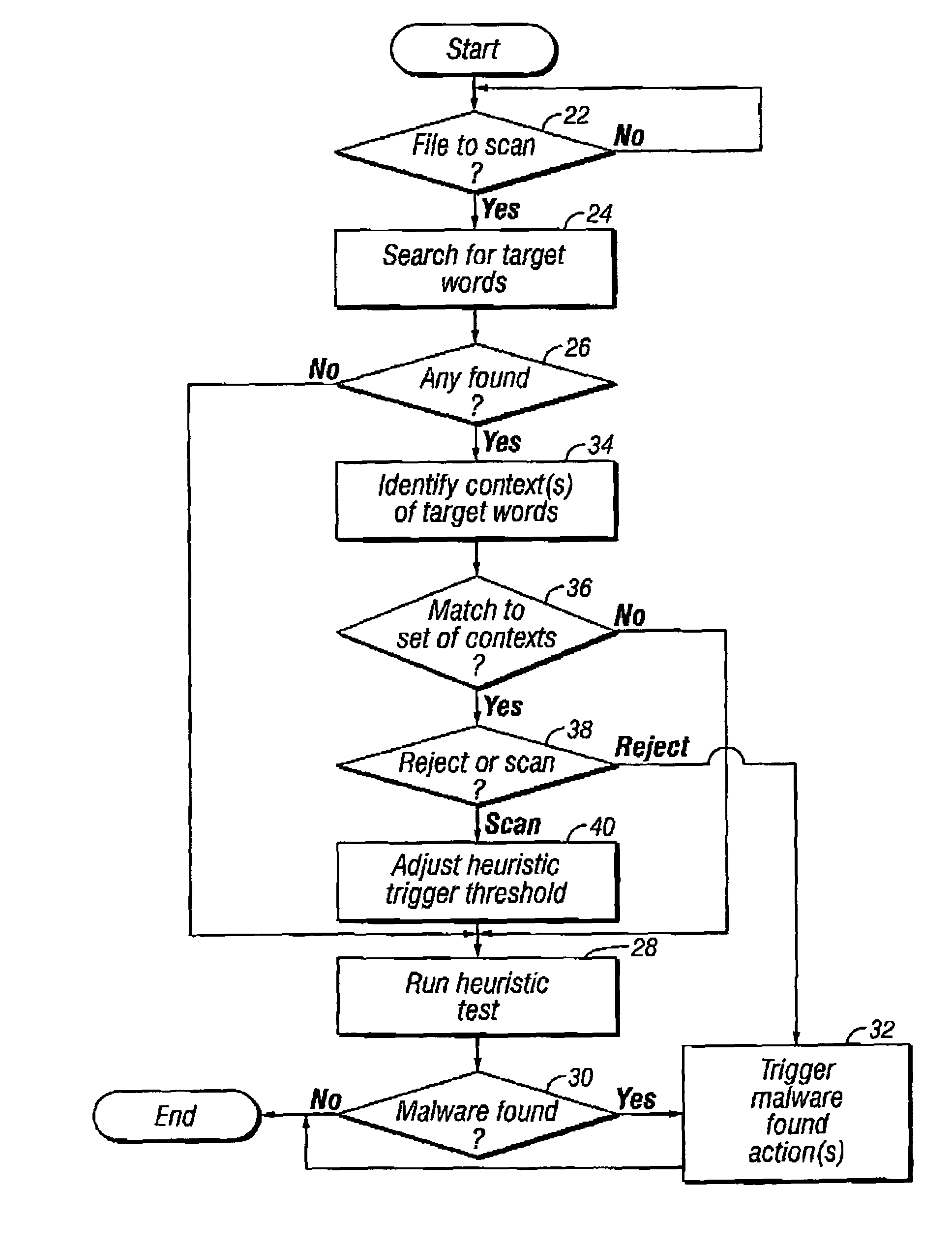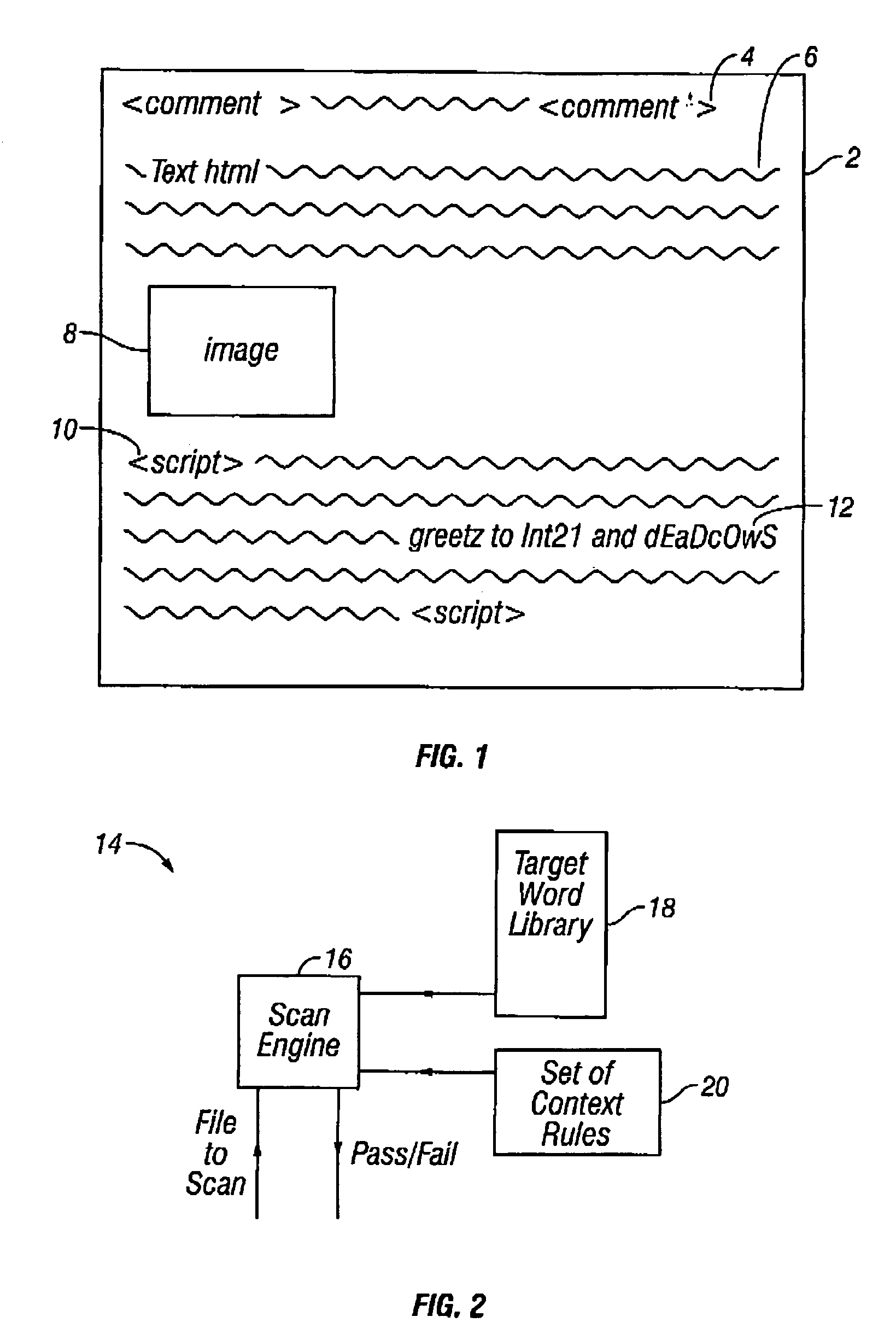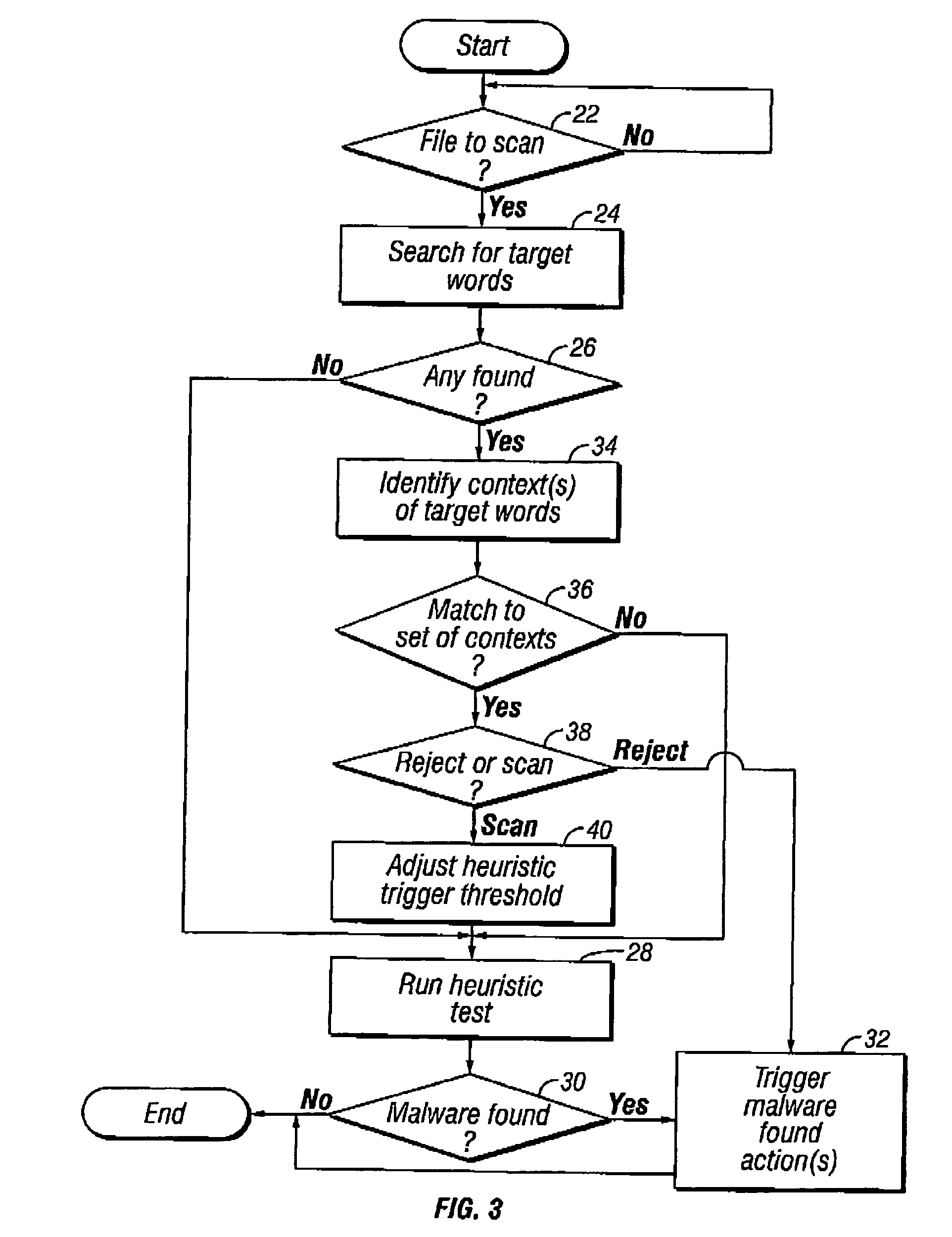Identifying malware containing computer files using embedded text
- Summary
- Abstract
- Description
- Claims
- Application Information
AI Technical Summary
Benefits of technology
Problems solved by technology
Method used
Image
Examples
Embodiment Construction
[0030]FIG. 1 illustrates a web page 2. This web page 2 includes a comment field embedded by the author within comment tags. A normal html text portion 6 and an image 8 contain text and an image to be displayed. Also embedded within the web page 2 is a script portion 10 which contains executable code, such as Java.
[0031]In the example illustrated, the script portion 10 include an embedded suspicious message 12 which includes a known malware author name “Int21”. The embedded message 12 also includes a word having a suspicious suffix, i.e.“greetz”, which is a common type of slang used by malware authors. The embedded message 12 further includes a word having a suspicious format in form of mix of upper and lower case characters, i.e. “dEAdcOwS”. The occurrence of these suspicious target words within the context of a script portion 10 is strongly indicative of the web page 2 containing malware, in this case the script portion 10 is the malware. Thus, even though the script portion 10 may...
PUM
 Login to View More
Login to View More Abstract
Description
Claims
Application Information
 Login to View More
Login to View More - R&D
- Intellectual Property
- Life Sciences
- Materials
- Tech Scout
- Unparalleled Data Quality
- Higher Quality Content
- 60% Fewer Hallucinations
Browse by: Latest US Patents, China's latest patents, Technical Efficacy Thesaurus, Application Domain, Technology Topic, Popular Technical Reports.
© 2025 PatSnap. All rights reserved.Legal|Privacy policy|Modern Slavery Act Transparency Statement|Sitemap|About US| Contact US: help@patsnap.com



